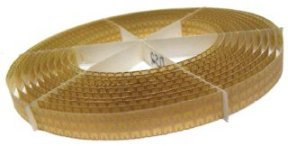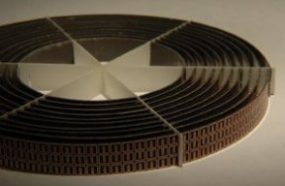Invisibility Ring
Scientists have invented a ring-shaped device that's invisible to microwaves.
Scientists can’t yet make an invisibility cloak like the one that Harry Potter uses. But, for the first time, they’ve constructed a simple cloaking device that makes itself and something placed inside it invisible to microwaves.
 |
|
This new, ring-shaped invisibility device is 1 centimeter tall and about the size of a drink coaster. |
| David Schurig et al./Science |
When a person “sees” an object, his or her eye senses many different waves of visible light as they bounce off the object. The eye and brain then work together to organize these sensations and reconstruct the object’s original shape.
So, to make an object invisible, scientists have to keep waves from bouncing off it. And they have to make sure the object casts no shadow. Otherwise, the absence of reflected light on one side would give the object away.
Invisibility isn’t possible yet with waves of light that the human eye can see. But it is now possible with microwaves.
Like visible light, microwaves are a form of radiant energy. They are part of the electromagnetic spectrum, which also includes radio waves, infrared light, ultraviolet rays, X rays, and gamma rays. The wavelengths of microwaves are shorter than those of radio waves but longer than those of visible light.
 |
|
Microwaves bent by the walls of this 1-centimeter-tall invisibility device skip the center area and come out the other side on their original paths as if nothing had been in the way. |
| David Schurig et al./Science |
The scientists’ new “invisibility device” is the size of a drink coaster and shaped like a ring. The ring is made of a special material with unusual abilities. When microwaves strike the ring, very few bounce off it. Instead, they pass through the ring, which bends the waves all the way around until they reach the opposite side. The waves then return to their original paths.
To a detector set up to receive microwaves on the other side of the ring, it looks as if the waves never changed their paths—as if there were no object in the way! So, the ring is effectively invisible.
When the researchers put a small copper loop inside the ring, it, too, is nearly invisible.
However, the cloaking device and anything inside it do cast a pale shadow. And the device works only for microwaves, not for visible light or any other kind of electromagnetic radiation.
So, Harry Potter’s invisibility cloak doesn’t have any real competition yet.—C. Gramling
Going Deeper:
Weiss, Peter. 2006. Vanishing actor: Physicists unveil first invisibility cloak. Science News 170(Oct. 21):261. Available at http://www.sciencenews.org/articles/20061021/fob6.asp .
______. 2006. Out of sight. Science News 170(July 15):42-43. Available at http://www.sciencenews.org/articles/20060715/bob9.asp .
Peterson, Ivars. 2004. Invisible man. Science News for Kids (July 28). Available at http://www.sciencenewsforkids.org/articles/20040728/SciFiZone.asp .
Science project idea:
Making glass objects disappear.
www.exploratorium.edu/snacks/disappearing_glass_rods.html (Exploratorium).







